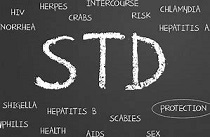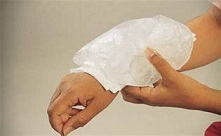Is the Onset of Epididymitis Always Related to an STD?
Date:2024-10-09 click:0
Epididymitis is an inflammation of the epididymis, commonly caused by a urinary tract infection (UTI), with Escherichia coli being the most frequent culprit. In some cases, especially in sexually active adult men, the infection can be linked to sexually transmitted diseases (STDs) such as chlamydia, mycoplasma, or gonorrhea.
However, not all cases of epididymitis are caused by sexual activity. It can also occur in children and adolescents without sexual experience, often following viral infections like mumps. Understanding the different causes of epididymitis is key to proper treatment and care.

Epididymitis usually followed by viral infections in children or adolescents without sexual experience, especially mumps infection. In addition, it should be noted that the symptoms of acute epididymitis and testicular torsion are similar. Children or teenagers in development need to see a doctor as soon as possible if they have acute testicular pain.
What symptoms can epididymitis have?
Inflammation of epididymis is usually manifested by pain and swelling on one side. Some patients have pain and discomfort in urination at the initial stage, and some will have a fever. No matter what kind of symptoms you have, it is recommended to see a doctor as soon as possible.
If epididymitis is diagnosed, it usually needs to be treated with antibiotics for 4 to 12 weeks, and painkillers (usually non-steroid anti-inflammatory drugs) combined with some symptom relief can make swelling and pain disappear quickly. If the swelling is intolerable, ice is usually recommended in addition to medication.

The method of ice application:
Use a plastic bag or ice application bag to put ice into the bag and add water, tighten the bag opening, and then wrap a layer of the towel to apply on the affected area. It is recommended to apply ice for 15 minutes and rest for 30 minutes, and it can relieve the swelling and pain. It is also recommended to wear tight underwear to prevent swelling of the scrotum from falling down to aggravate the condition.
After treatment, the symptoms of painful urination, fever, and scrotal pain will be relieved quickly, while swollen epididymis usually takes 2 to 6 weeks to subside slowly (you need to wait patiently). In the period of acute epididymis, if the antibiotics are stopped in the middle of the treatment, it is easy to develop into chronic epididymitis.
It can be serious even if there is suppuration, or it can't be cured, then epididymal resection may be needed, which often occurs in the elderly or people with low immunity. After the operation, the patients can be treated with Diuretic and Anti-inflammatory Pill for consolidated treatment.

If the effect of the conventional medication is not good, we can also choose Diuretic and Anti-inflammatory Pill. On the one hand, it can remove the pathogens that cause the pathological changes of testis and epididymis, and it can effectively kill bacteria and eliminate inflammation.
On the other hand, the blood-activating, Qi-activating, diuretic effect in the formula of the pills can effectively eliminate the swelling, pain, and discomfort of testis and epididymis, eliminate the burning and tingling of the urethra. In addition, it also has a certain therapeutic effect on the complications of small cyst of the epididymis and small nodule of the epididymis.
What to do if there is still swelling?
After acute inflammation, if there is still a mass, it is recommended to go to the hospital again because there is still a chance of potential epididymal tumors.

Can you have sexual behavior when acute epididymitis attacks?
Generally, there is no limit. However, if it is suspected that the urinary tract infection is sexually transmitted, or the discomfort is more serious after ejaculation, it is recommended to stop sex for two weeks.

Can you have sexual behavior when acute epididymitis attacks?
Generally, there is no limit. However, if it is suspected that the urinary tract infection is sexually transmitted, or the discomfort is more serious after ejaculation, it is recommended to stop sex for two weeks.
Recommended readings:



